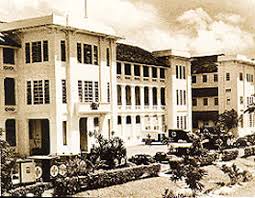At about 13:00 on 14 February, Japanese soldiers advanced towards the Alexandra Barracks Hospital.A British lieutenant—acting as an envoy with a white flag—approached the Japanese forces but wasbayoneted and killed. After the Japanese troops entered the hospital, a number of patients, including those undergoing surgery at the time, were killed along with doctors and members of nursing staff. The following day about 200 male staff members and patients who had been assembled and bound the previous day, many of them walking wounded, were ordered to walk about 400 m (440 yd) to an industrial area. Anyone who fell on the way was bayoneted. The men were forced into a series of small, badly ventilated rooms and were imprisoned overnight without water. Some died during the night as a result of their treatment. The remainder were bayoneted the following morning.
Private Haines of the Wiltshire Regiment—another survivor—had been in the hospital suffering from malaria. He wrote a four-page account of the massacre, that was sold by his daughter by private auction in 2008;Haines describes how the Japanese did not consider those who were weak, wounded or who had surrendered to be worthy of life. After surrendering, staff were ordered to proceed down a corridor, where Sergeant Rogers was bayoneted twice in the back and another officer, Captain Parkinson, was bayoneted through the throat. Others killed included Captain Heevers and Private Lewis. Captain Smiley and Private Sutton were bayoneted but survived by playing dead. Many who had not been imprisoned in the tiny rooms in the industrial area were systematically taken away in small groups and bayoneted or macheted to death. This continued for 24 hours, leaving 320 men and one woman dead. Those who lost their lives included a corporal from the Loyal Regiment, who was impaled on the operating table, and even a Japanese prisoner who was perhaps mistaken for a Gurkha.
There were only five known survivors, including George Britton (1922–2009) of the East Surrey Regiment, and Private Haines, also Hugo Hughes, who lost his right leg, and George Wort, who lost an arm, both of the Malay Regiment. There may have been others. Haines' account came to light only after his death. Survivors were so traumatised that they rarely spoke of their ordeal.
After three days with no food or drink, those unable to walk were taken to Changi on wheelbarrows and carts, no motorised vehicles being available.

Source:http://en.wikipedia.org/wiki/Battle_of_Singapore(Date Accessed:17Feb2013)
Source:http://en.wikipedia.org/wiki/Battle_of_Singapore(Date Accessed:17Feb2013)
No comments:
Post a Comment